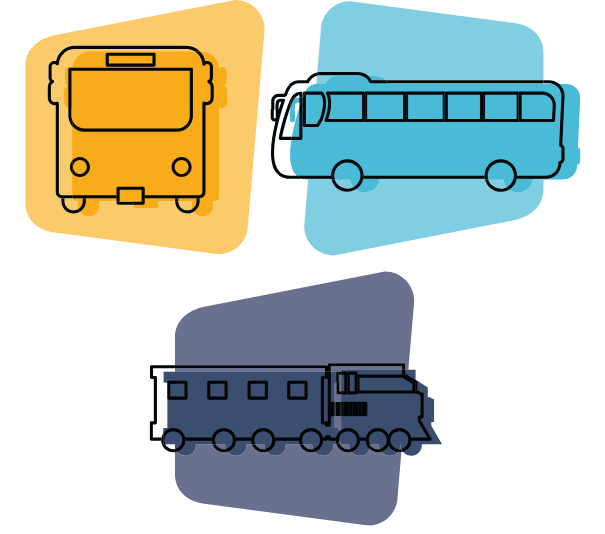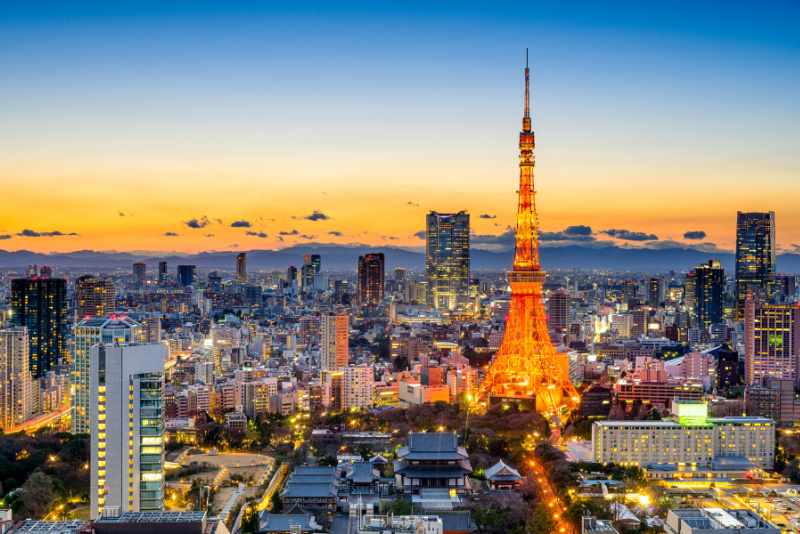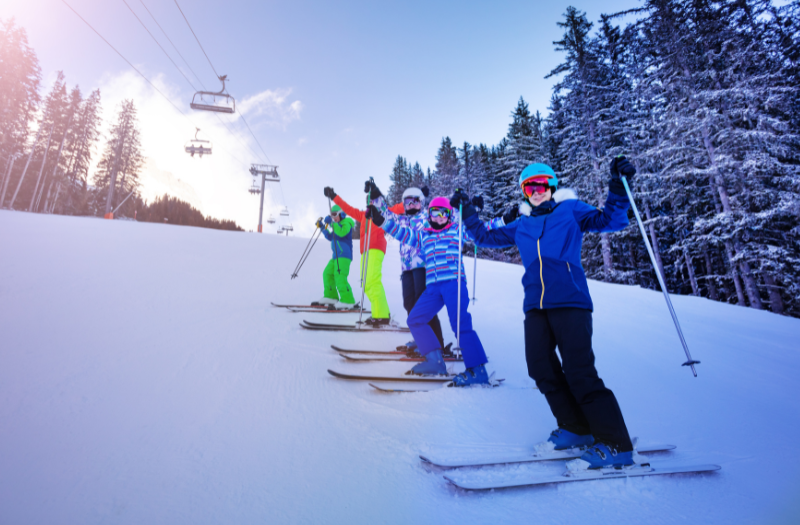Your flights are booked, and you’re excited to head to Hakuba.
The hotel is booking restaurants for you, and your ski rentals are arranged, but you’re not quite sure how to get to Hakuba.
You’re a group of travelers, and all the answers online are geared towards individuals or a family of four.
What do you do if you are a larger group?
If you’re traveling to Hakuba with 6 or more people, this is the guide for you.
Here at Hakuba White Fox, our properties are ideal for families or large groups, and we help customers like you find their way to Hakuba every winter.
Hakuba White Fox Co offers luxury accommodations with personalized concierge services.
Book your next ski vacation.
Transportation Options

Getting to Hakuba for larger groups can be more difficult. Most groups prefer to travel together rather than taking separate trains or buses. Below are our preferred methods for groups traveling to Hakuba
1 – Private Shuttle (7 People/Van)
- Price: ¥120,000 – ¥150,000
- Capacity: 7 ppl/van
A private taxi is an excellent option for larger groups. They offer door-to-door service and flexible schedules to fit your group’s needs. They are also the most convenient for traveling with ski or snowboard gear and luggage.
Providers:
- Alps
- Alpico
- Contact us for additional vendors
2 – Public Transport and Private Shuttle
- Shuttle Cost: 30,000
- Capacity: 7 ppl/van
If your group arrives at different times or from various locations, a combination of public transportation and private shuttle is often the best option. Your group can meet at Nagano train station and then take a private shuttle from Nagano to Hakuba. This is ideal if your group is flying in at different times or some are touring another area in Japan before heading to Hakuba.
Providers:
- Alps
- Alpico
- Contact us for additional vendors
3 – Nagano Snow Shuttle
- Price: 15,000 – 20,000 per person
The Nagano Snow Shuttle simplifies travel to Hakuba ski resorts and other areas in Nagano. The shuttle bus offers direct connections from major Tokyo airports, including Narita and Haneda, and central Tokyo.
Nagano Snow Shuttle is a stress-free and practical option for groups or individuals carrying bulky ski equipment. Whether starting your trip directly from the airport or exploring multiple resorts, the Nagano Snow Shuttle ensures a smooth and reliable travel experience.
4 – Public Transport
Japan boasts one of the world’s fastest and most efficient transportation systems. You can book your tickets in advance, both online and at the ticket counter, making it convenient for tourists who don’t speak Japanese. The trains run on time, with delays of only a few minutes or less.
Use Google Maps to plan your route to Nagano station and take the shuttle from Nagano to Hakuba. You can book trains in advance on eki-net, while buses are available on a first-come, first-served basis.
Luggage
If you decide to use public transportation, we recommend shipping your bags using one of Japan’s convenient services, such as Black Cat or JAL ABC. Please be aware that it may take up to 48 hours for your luggage to arrive, so plan accordingly.
How To Get To Hakuba
Below are some recommended travel routes to Hakuba.
1 – From Tokyo

Whether you’re traveling from Narita Airport, Haneda Airport, or central Tokyo, getting to Hakuba is relatively easy. Our preferred transfers for larger groups are:
Private Shuttle
- Estimated Time: ~5 hours
- Estimated Cost: ¥120,000 – ¥150,000
If you’ve ever wrangled your friends or family for a large group trip, you know the stress of coordinating everyone’s schedules and ensuring smooth transportation. Opting for a chartered taxi or bus ensures a private and seamless travel experience.
Pros: Offers door-to-door service without the hassle of public transportation schedules.
Cons: A private shuttle is more expensive and has a maximum capacity of 7 people per vehicle. Depending on your group size, this may not be cost-effective.
Nagano Snow Shuttle
- Estimated Time: 6-7 hours
- Estimated Cost: ¥13,000 to ¥14,900 per passenger
The Nagano Snow Shuttle is an excellent option for budget-friendly travelers.
Pros: Excellent for budget-conscious travelers and convenient for standard flight times.
Cons: Although more cost-effective, there is a trade-off of time and convenience. The Nagano Snow Shuttle operates on a fixed schedule and may not align well with your flight times.
2 – From Osaka & Kyoto

If you have added a week in Kyoto or Osaka to your trip, you have multiple options for reaching Hakuba from these cities.
Private Shuttle
- Estimated Time: 6-7 hours
- Estimated Cost: ¥170,000
If you prefer a hassle-free and direct transfer, a private shuttle from Osaka or Kyoto is your best bet. Shuttles are a convenient option, taking you directly from your accommodation in Osaka or Kyoto to your destination in Hakuba.
Pros: Hassle-free and convenient for travelers with limited time.
Cons: More expensive compared to other options.
Train & Shuttle
- Estimated Time: 4-5 hours
- Estimated Cost: ¥10,000 – ¥15,000 (train) + ¥30,000 (shuttle)
To balance Cost and convenience, taking the train to Nagano station and using a private shuttle to Hakuba is a great option. From Osaka or Kyoto, board the bullet train for a fast and comfortable ride to Nagano. Once in Nagano, a private shuttle can take you directly to your accommodation in Hakuba.
Pros: Combines the speed of the bullet train with the convenience of a door-to-door shuttle service.
Cons: Requires transferring from train to shuttle, which may be inconvenient for travelers with heavy luggage or larger groups.
Luggage Tips
Ta-Q-Bin, also known as the Japanese courier service, is a convenient option for shipping your luggage ahead of time to your destination. Major providers, such as Yamato Transport and Sagawa Express, allow travelers to send suitcases, ski equipment, or other large items to hotels, airports, or designated locations.
When using Ta-Q-Bin, plan ahead, as delivery typically requires a minimum of 48 hours. This is especially crucial during peak seasons or when sending luggage to rural areas. This service makes traveling on Japan’s efficient trains much easier, as you’ll only need to manage your essentials while on the go.
Why You Shouldn’t Rent a Car to Get to Hakuba
While renting a car may seem like a good way to get to Hakuba, we do not recommend it for the following reasons.
- 4WD and Snow Tires: Many rental vehicles lack proper winter tires or 4-wheel drive capabilities, which are vital for navigating snowy mountain roads.
- Snow Driving Experience: Without prior experience, the treacherous conditions can be daunting and potentially dangerous.
However, if you are comfortable driving in snow, renting a car while in Hakuba makes a lot of sense. A rental vehicle gives you the freedom to explore the region at your own pace and on your schedule. You can easily visit multiple ski resorts daily without relying on public transportation or expensive private shuttles.
Conclusion
Reaching Hakuba may seem like a hassle, but it is well worth the effort. With its world-class ski resorts, stunning scenery, and rich cultural experiences, Hakuba offers something for everyone. Whether you are an avid skier or just looking for a winter getaway, this charming mountain town in Japan is sure to leave you with memories that will last a lifetime. So pack your bags, hit the slopes, and prepare for an unforgettable Hakuba adventure!
About Us
Hakuba White Fox Co offers luxury accommodations with personalized concierge services.
From ski lessons to dining, our bilingual team ensures a seamless, unforgettable stay in Hakuba.
FAQ
What is the fastest transportation option from Tokyo to Hakuba?
The fastest option is to take the Hokuriku Shinkansen to Nagano station, followed by a local bus. This journey can take as little as 3.5 hours.
Is English widely spoken in Hakuba?
Yes, many locals in Hakuba are accustomed to tourists and can communicate in English. However, it’s always helpful to learn a few basic Japanese phrases as well.
What is the best time of year to visit Hakuba for skiing?
The best time to visit Hakuba for skiing is from January to mid-March, when the snow conditions are at their peak. However, depending on weather conditions, some ski resorts may open earlier or stay open longer.


